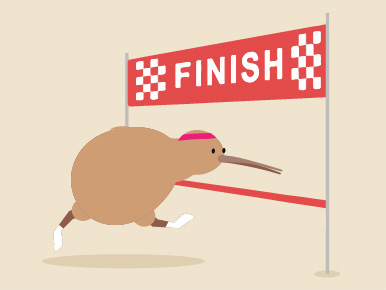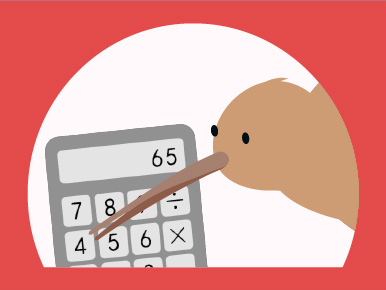Your KiwiSaver questions answered
How well do you know KiwiSaver?
The scheme is a big part of many New Zealanders’ financial lives, but some people still have questions about some of the details.
Here are some common KiwiSaver questions – and their answers.
How much do I need to contribute to KiwiSaver?
You can choose to contribute any amount that works for you. If you’re making the payments automatically from your salary, you can choose to contribute 3 percent, 4 percent, 6 percent, 8 percent or 10 percent of your gross pay. But you can also make voluntary payments – either on top of your regular contributions or instead of, if you’re on a KiwiSaver contribution holiday, or are self-employed.
What does my employer have to contribute?
If you’re employed and contributing to KiwiSaver, your employer has to contribute 3 percent of your gross pay. Some employers choose to offer to match higher percentages, if an employee is saving at a higher rate.
In some cases, employers offer total remuneration packages, where the amount they should contribute to your KiwiSaver account is included in your total salary – employees need to agree to this approach through “good faith” bargaining.
What other contributions are available?
If you meet the eligibility requirements, and you contribute at least $1042.86 a year into your KiwiSaver fund, you will qualify for $521 from the Government in a member tax credit. If you contribute less than that amount, you will receive 50c for every $1 contributed up to the maximum.
When can I withdraw money from KiwiSaver?
You can withdraw money from your KiwiSaver account when you are 65, or when you buy your first home (provided you meet criteria related to the length of time you’ve been a member of the scheme). In some cases, you can also make a withdrawal if you are suffering serious financial hardship, or are moving permanently overseas. If you are moving to Australia, your option is to transfer the money into an Australian superannuation scheme.
What sort of fund should I be in?
Providers offer a range of different KiwiSaver funds, which suit different people, depending on their situations and KiwiSaver objectives. To work out what kind of fund might be right for you, a tool like Sorted’s KiwiSaver Fund Finder could be handy. Usually, it’s a matter of working out your risk profile – how comfortable you are with risk and how long your investment horizon is – and aligning that to a fund that fits.
What fees will I pay in KiwiSaver?
Fund managers all charge fees for their KiwiSaver schemes. You’ll usually pay a set annual admin fee, and then a fee that’s based on how much money you have invested. Again you can use tools such as Sorted’s KiwiSaver Fund Finder to compare the options.
How do I know which provider I’m with?
If you haven’t made an active choice about your KiwiSaver fund, you will probably have been placed into one of the “default” funds, unless your employer has a preferred scheme. All KiwiSaver providers send out communications relatively regularly, but if you haven’t bee receiving any and aren’t sure where your KiwiSaver money might be, you can find the details via Inland Revenue. It holds information about the contributions made to the scheme.
Can I change fund?
Yes, it’s easy to change the KiwiSaver fund and provider that you’re with. If you want to change the type of fund you’re in with the same provider, you can contact them and ask to be shifted. If you want to change provider, you can usually contact the provider you want to move to, and they will handle the process for you.
Do I have to be in KiwiSaver?
No, you can choose to opt out or take a contributions holiday. If you have been a contributing member of KiwiSaver for a year or more you do not need to give a reason for wanting a savings suspension. The default suspension period is three months but it is possible to suspend savings for a year.
But KiwiSaver can be an extremely helpful tool to get you to your retirement goals. Sorted’s calculator shows a 20-year-old in a growth fund saving 3 percent of their $60,000-a-year salary and getting 3 percent from their employer, plus the maximum Government contributions, could expect to have saved more than $350,000 by the time they are 65.
Need a hand?
If you have questions about KiwiSaver, or want to talk about whether you’ve got your settings right, get in touch with us. We’re here to help answer your questions and help you get on the right saving and investing path.
Disclaimer: Please note that the content provided in this article is intended as an overview and as general information only. While care is taken to ensure accuracy and reliability, the information provided is subject to continuous change and may not reflect current developments or address your situation. Before making any decisions based on the information provided in this article, please use your discretion and seek independent guidance.













